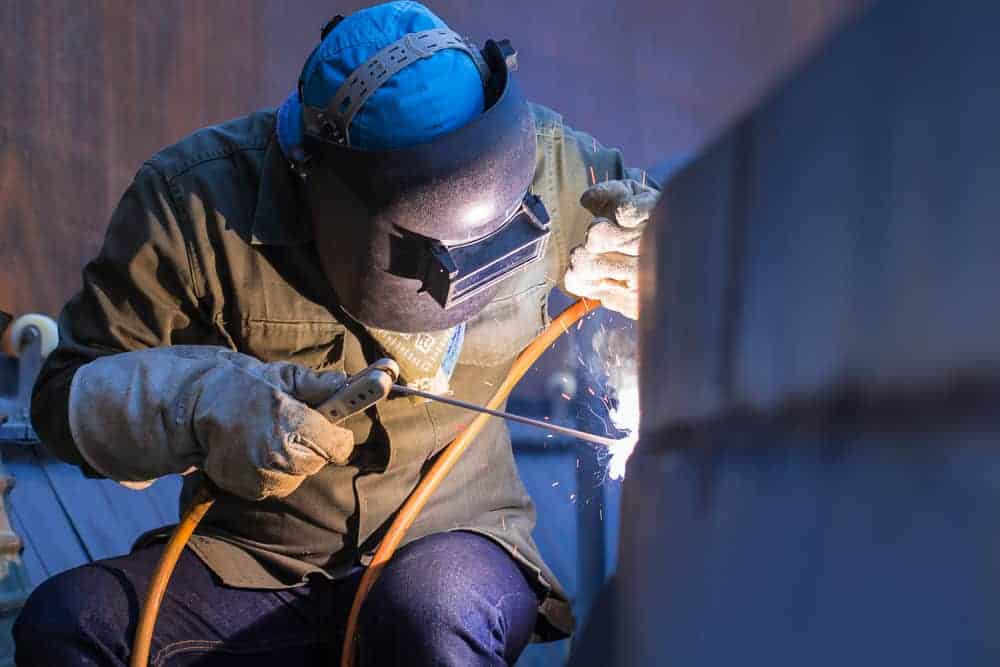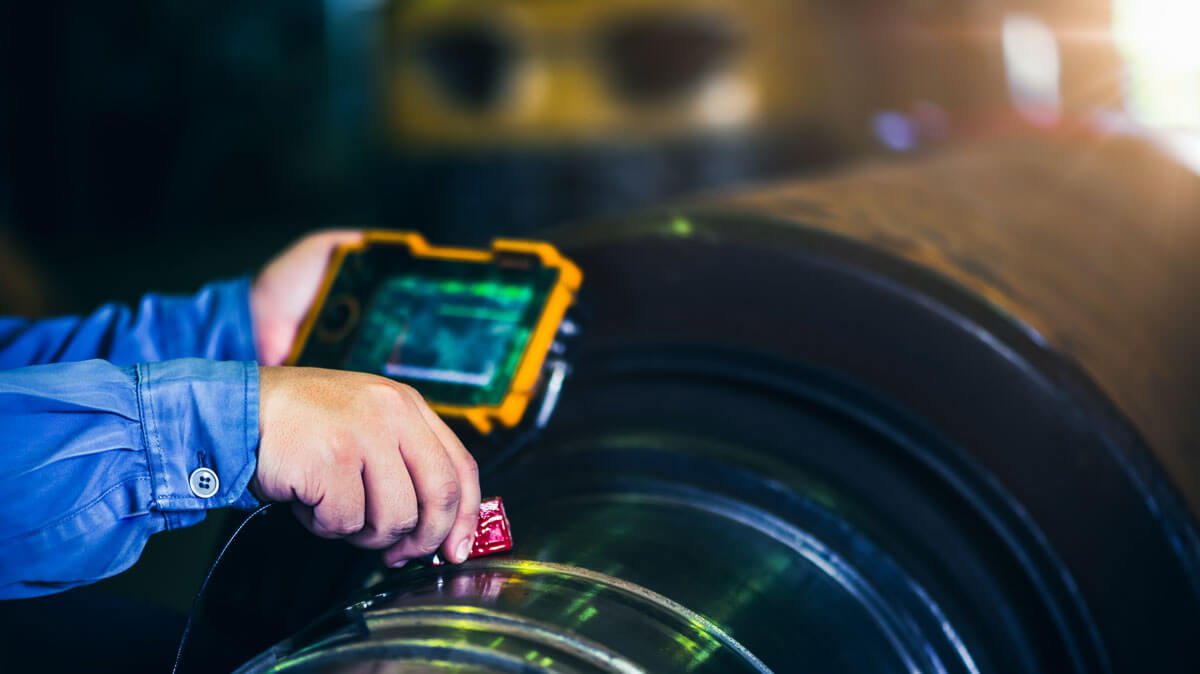A Comprehensive List for Effective Welding Assessment Practices
In the world of welding, the integrity of frameworks is critical, requiring a strenuous strategy to assessment practices. A detailed list functions as an important device in guaranteeing adherence to sector criteria, incorporating important pre-welding, in-process, and post-welding analyses. By methodically attending to product confirmation, weld quality, and thorough documents, companies can dramatically improve security and performance. What certain aspects should be focused on in each phase to attain optimal outcomes? Exploring these crucial components can produce understandings that greatly influence welding procedures.
Recognizing Welding Requirements
Welding criteria play an important function in making certain the top quality and safety and security of bonded components and structures. These standards establish the standards for materials, procedures, testing, and inspection, thus providing a framework for constant quality control in welding processes. Different organizations, consisting of the American Welding Culture (AWS), the International Organization for Standardization (ISO), and the American Culture of Mechanical Designers (ASME), have actually developed thorough criteria that control different elements of welding.
Recognizing welding standards is crucial for professionals in the field, as adherence to these standards lessens the threat of flaws and failings in welded joints. These standards cover specific requirements for weld high quality, consisting of appropriate resistances, the sort of welding techniques to be utilized, and the credentials required for inspectors and welders.

Pre-Welding Assessment Steps
Before any type of welding procedure commences, a thorough pre-welding inspection is crucial to determine potential concerns that may endanger the top quality of the weld. This preliminary action serves as a critical structure for ensuring conformity with suitable welding codes and standards.
The initial step in the pre-welding evaluation is to verify the products being made use of. This consists of checking for the proper kind and quality of metals as defined in the job documentation. Next off, it is critical to check the fit-up of the components to make certain correct positioning and joint arrangement. Misalignment can bring about inadequate penetration and architectural weaknesses.
In addition, evaluating the cleanliness of the surface areas is crucial; impurities such as rust, oil, or paint can detrimentally affect the high quality of the weld. Following this, a complete evaluation of the welding tools ought to be performed, ensuring that it is adjusted and in great working problem.
Finally, reviewing the qualifications of the welding personnel is necessary. Welders should have the needed accreditations and experience to execute the certain welds needed for the task. By adhering to these pre-welding evaluation steps, the possibility of defects and failings in the final weld can be substantially lowered.

In-Process Assessment Methods
In-process evaluation methods play an important function in guaranteeing the honesty and top quality of welds as they are being implemented. These techniques permit inspectors to determine defects or deviations from requirements in actual time, therefore protecting against pricey repairs and guaranteeing adherence to design requirements.
One trick method involves visual assessment, where inspectors examine the weld bead for uniformity, penetration, and correct profile. This can be matched by the usage of evaluates to measure weld dimensions, guaranteeing conformity with established tolerances. Additionally, the application of non-destructive testing (NDT) methods, such as ultrasonic screening or magnetic particle testing, throughout the welding process can expose subsurface imperfections that might not show up on the surface.
An additional vital facet is checking welding criteria, including voltage, amperage, and travel speed. Consistency in these criteria is critical for achieving optimum weld top quality. Recording these parameters throughout the welding procedure supplies a deducible record for future reference.
Educating employees in correct assessment methods and the use of suitable devices boosts the efficiency of in-process evaluations. By integrating these practices, companies can accomplish better welds, lower rework, and eventually guarantee the safety and integrity of welded structures.
Post-Welding High Quality Checks
Adhering to the conclusion of welding procedures, post-welding top quality checks are essential to verify that the welds fulfill all specified criteria and requirements. These checks are crucial for making sure the stability and sturdiness of the welded joints. The inspection process commonly begins with an aesthetic assessment, evaluating for surface area problems such as splits, porosity, or incomplete blend.
Consequently, non-destructive screening (NDT) methods, such as ultrasonic screening, radiographic screening, or magnetic bit screening, may be used to discover inner defects that are not noticeable to the nude eye. Each technique has its one-of-a-kind advantages and is chosen based upon the weld's place, product type, and the nature of the application.
Additionally, confirming dimensional precision is an important element of post-welding top quality checks. This involves determining the weld's account, visit this website alignment, and size to make sure conformity with engineering specifications. Assessing the mechanical homes of the weld, consisting of tensile strength and ductility, can provide additional assurance of performance under functional conditions. Overall, extensive post-welding examinations are vital for maintaining adherence, safety and security, and efficiency to regulative and market standards.
Documents and Coverage
Exactly how can reliable paperwork and reporting boost the welding assessment process? Precise documents and detailed coverage are important parts that guarantee the honesty and quality of welding procedures. Welding Inspection Milwaukee. They serve as a formal document of evaluation searchings for, helping with responsibility and traceability in compliance with market criteria

A well-structured coverage system enables examiners to plainly connect any kind of inconsistencies, locations, or see non-conformances needing renovation. This transparency fosters a setting of continual renovation, as stakeholders can readily evaluate past performance and execute restorative actions.
Furthermore, efficient paperwork consists of in-depth documents such as welding treatment specs (WPS), welder certifications, and assessment checklists. These components give a structure for reviewing weld top quality and adherence to developed standards. In case of conflicts or high quality problems, detailed documents works as a reliable reference, lowering obscurity and securing all celebrations involved.
Last but not least, maintaining arranged documents helps in training and accrediting employees, making certain that market finest techniques are promoted. Inevitably, careful paperwork and reporting not just boost the welding inspection procedure but likewise add to the overall safety and security and reliability of welded frameworks.
Verdict
In final thought, an extensive checklist for reliable welding assessment techniques is crucial for guaranteeing top quality and safety in welded frameworks. Adherence to developed welding criteria, precise pre-welding assessments, rigorous in-process evaluations, and detailed post-welding high quality checks jointly add to the stability of bonded joints. Furthermore, diligent documents and reporting of examination searchings for enhance liability and facilitate continuous improvement. Carrying out these techniques will dramatically help in compliance with market criteria and inevitably cultivate a culture of top quality in welding operations.
Welding criteria play a critical function in making certain the high quality and safety and security of welded frameworks and elements. Various organizations, including the American Welding Society (AWS), the International Company for Standardization (ISO), and the American Culture of Mechanical Designers (ASME), have actually developed extensive requirements that govern different facets of welding.
Following the completion of welding procedures, post-welding top quality checks are critical to validate that the welds meet all specified criteria and demands - Welding Inspection Milwaukee.In final thought, a thorough list for efficient welding evaluation methods is crucial for making sure here are the findings top quality and safety and security in bonded frameworks. Adherence to established welding requirements, thorough pre-welding inspections, extensive in-process evaluations, and thorough post-welding high quality checks jointly contribute to the honesty of bonded joints